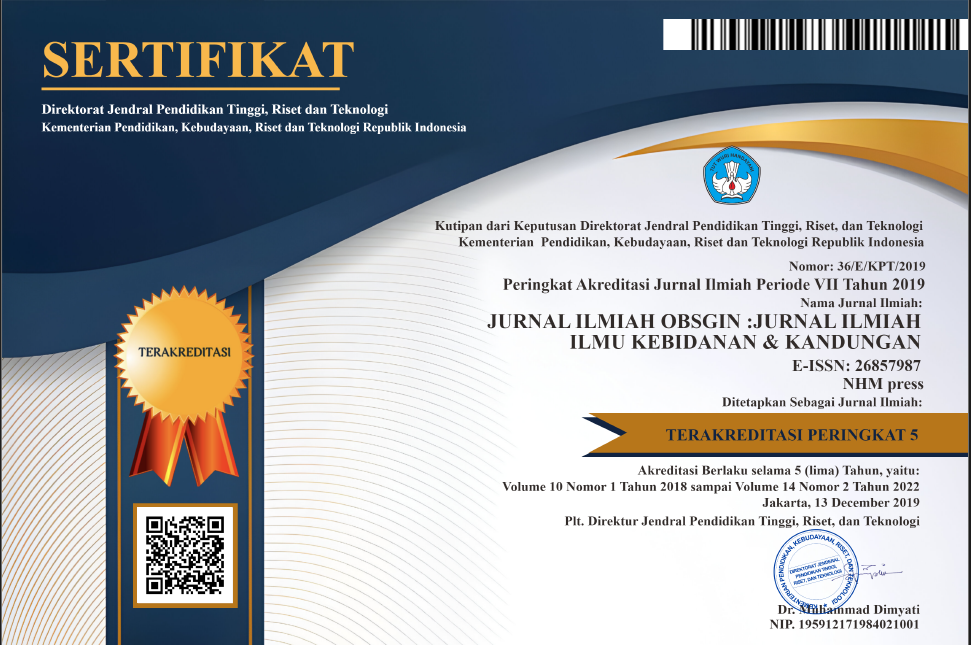Pengaruh Pendidikan Kesehatan Tentang Pernikahan Dini Melalui Media Komik Digital Technique Terhadap Pengetahuan dan Sikap Siswa
Abstract
This research aims to determine the effect of health education about early marriage through digital comic technique media on the knowledge and attitudes of high school students. This research method is quantitative research using a pretest posttest with control group design with the type of intervention using digital comic techniques in the intervention group. The results of the paired ttest analysis, the knowledge aspect is known to be p-value =p=0.000(p < 0.05), while attitude is 0.000 (p < 0.05). In conclusion, health education using digital comic techniques has been proven to increase high school students' knowledge and attitudes about early marriage. The results of the independent test show that the significance level for the knowledge aspect is 0.51 (significance > 0.05) and the significance level for the attitude aspect is 0.55 (> 0.05). These two intervention groups did not provide a significant difference in knowledge and attitudes. students about early marriage
References
Alifariki, L. O., Rahmawati, R., Sukurni, S., & J Siagian, H. (2023). Comparative Study of Learning Media: Video Animation and E-Book in Education on Drugs Abuse in Students. Health Education and Health Promotion, 11(1), 1001–1006.
Bouman, M., Lubjuhn, S., & Hollemans, H. (2017). Entertainment-education and child marriage a scoping study for girls not brides: The global partnership to end child marriage. Center for Media & Health.
Choo, Y. B., & Kwon, V. (2017). Using multimedia interactive grammar to enhance possessive pronouns among year 4 pupils. Journal of English Education, 2(1), 34–42.
Cooper, S., Cant, R., Porter, J., Bogossian, F., McKenna, L., Brady, S., & Fox-Young, S. (2012). Simulation based learning in midwifery education: a systematic review. Women and Birth, 25(2), 64–78.
Hastuty, Y. D. (2018). Faktor-faktor yang berhubungan dengan terjadinya pernikahan dini di Desa Sunggal Kanan Kabupaten Deliserdang. AVERROUS: Jurnal Kedokteran Dan Kesehatan Malikussaleh, 2(2), 55–64.
Hobbs, R. (2011). Digital and media literacy: Connecting culture and classroom. Corwin Press.
Kemenkes Republik Indonesia. (2020). Profil Kesehatan Indonesia tahun 2020. In Pusdatin. https://www.kemkes.go.id/downloads/resources/download/pusdatin/profil-kesehatan-indonesia/Profil-Kesehatan-Indonesia-Tahun-2020.pdf. Last accessed: 19 July 2022.
Mulyadi, M. I., Warjiman, W., & Chrisnawati, C. (2018). Efektivitas Pendidikan Kesehatan dengan Media Video Terhadap Tingkat Pengetahuan Perilaku Hidup Bersih dan Sehat. Jurnal Keperawatan Suaka Insan (JKSI), 3(2), 1–9. https://doi.org/10.51143/jksi.v3i2.111
Mustafa, A. R., Ramadany, S., Sanusi, Y., Made, S., Stang, S., & Syarif, S. (2020). Learning Media Applications for Toddler Midwifery Care about Android-Based Fine Motor Development in Improving Midwifery Students Skills. International Journal of Health and Medical Sciences, 3(1), 130–135.
Rosita, M., & Zain, I. M. (2019). Analisis Faktor-Faktor Penyebab Pernikahan Usia Muda Di Kabupaten Probolinggo Berbasis Cluster. Swara Bhumi [e-Journal], 4(2).
Salamah, S. (2016). Faktor-faktor yang berhubungan dengan pernikahan usia dini di kecamatan pulokulon kabupaten grobogan. Universitas Negeri Semarang.
Salmon, C., & Atkin, C. (2003). Using media campaigns for health promotion. In The Routledge handbook of health communication (pp. 463–486). Routledge.
Wirasasmita, R. H., & Putra, Y. K. (2017). Pengembangan media pembelajaran video tutorial interaktif menggunakan aplikasi camtasia studio dan macromedia flash. EDUMATIC: Jurnal Pendidikan Informatika, 1(2), 35–43.
Wulanuari, K. A., Anggraini, A. N., & Suparman, S. (2017). Faktor-Faktor yang Berhubungan dengan Pernikahan Dini pada Wanita. JNKI (Jurnal Ners Dan Kebidanan Indonesia)(Indonesian Journal of Nursing and Midwifery), 5(1), 68–75.











